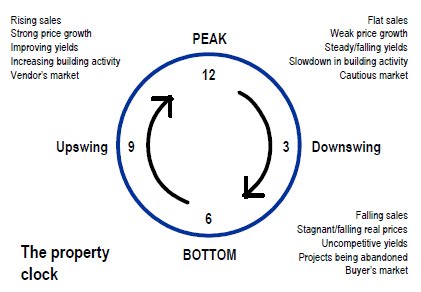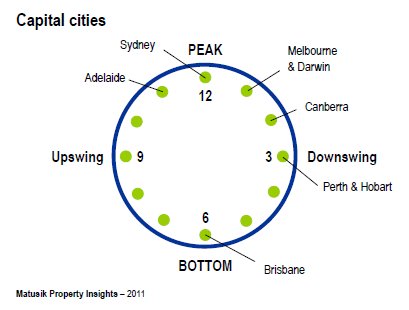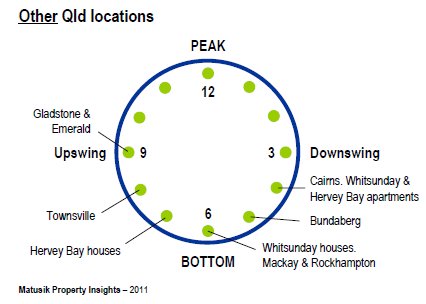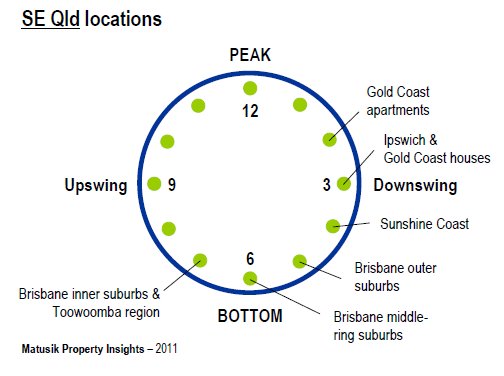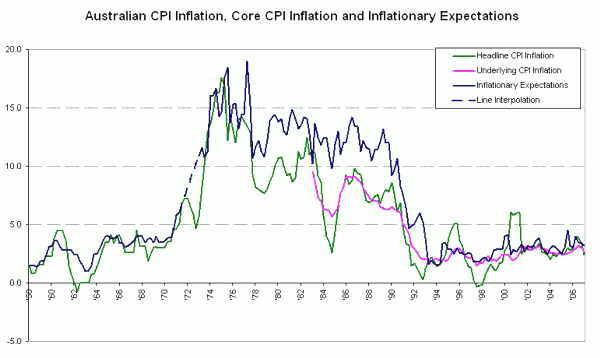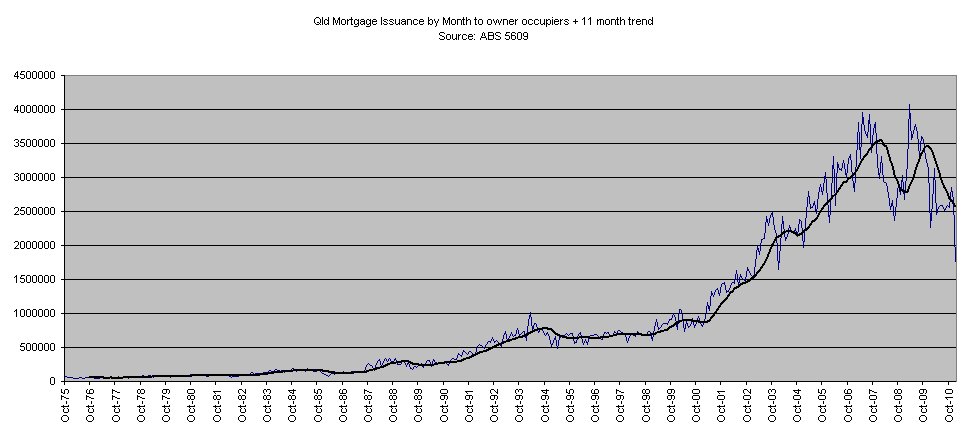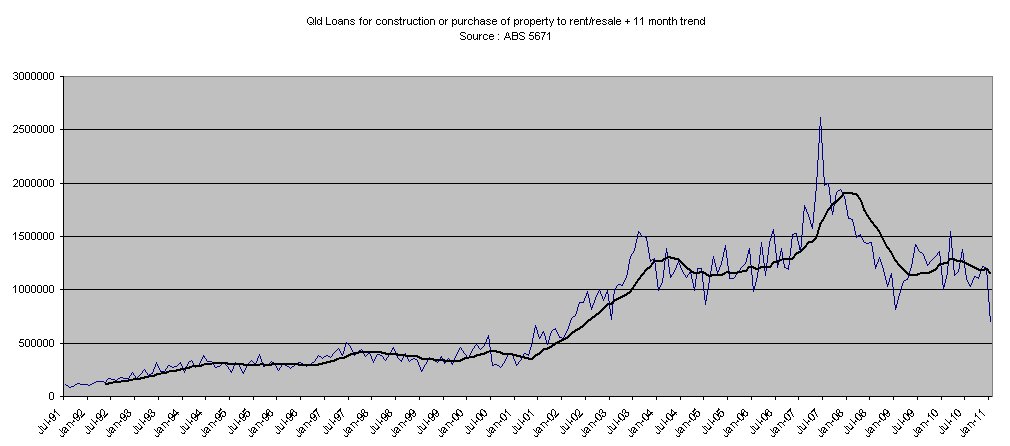For those of you who don’t happen to live in Brisbane you probably will not know who Michael Matusik is. He is an old property bull turned bear who then picked up a job as the property blogger at the Courier mail. It seems however that his time at the newspaper has spurred him back towards bullishness, not that I am surprised I consider the Courier Mail to be a real estate magazine with a news supplement.
Michael produces a monthly report on Queensland’s property market called the Matusik snapshot which is created by his own company. Since joining the Courier Mail, Michael’s profile seems to have risen somewhat and I have recently noticed that his “snapshot” is being linked to by a number of prominent real estate newsletters.
Today I recieved one of these wonderful productions in my inbox and I noted that Michael’s latest snapshot was utilised as a piece of evidence that the Brisbane market had bottomed out and now was the “time to buy”.
This obviously is not Michael’s fault. He produces these newsletters and has left quite a few warnings that this is only his “opinion” with statements like “In theory, at least, now appears to be a good time to buy“, but when you are somewhat of a media star you need to be a little careful of what you say.
As I have talked about previously I find the fact that people connected with the real estate industry can say almost whatever they want with no legal recourse is a disgrace. This certainly gives them an unfair commercial advantage over other industries but more importantly leads to the potential for financial entrapment. Just ask yourself what would happen to the share market if brokerage services were allowed to make statements like “you must buy BHP now, because it will double in value every five years“.
I therefore have no issue with calling a spade a spade when analysing media releases produced by people inside this industry. So let us take a look at Mr Matusik’s latest snapshot.
We have featured the property clock in two previous Snapshots –in late 2003 and again in early 2006. At those times, like now, the residential market was in somewhat uncharted waters. The housing outlook was then, again like now, quite polarised. Whilst a simple tool, the property clock is one of the more effective ways of clearly showing where things stand.
The positions on the property clock are determined by supply – either undersupply or oversupply. Everything else is either leading in to one of these market conditions or coming out of it. Let’s start with undersupply.
12 o’clock An undersupplied market, where demand exceeds total supply. Rents and prices rise. The economy is strong, as is wage growth. It is a vendor’s market and the best time to sell.
3 o’clock Asking prices become overwhelming and the market starts to lose confidence. An “even supplied”market, where the number of properties for sale usually matches the number of buyers. Interest rates often rise and economic growth slows. Buyers wait for discounting to begin. A very cautious market.
6 o’clock An oversupplied or buyer’s market. Harder economic times and usually at the tail end of high interest rates. Borrowers become frugal, some feeling that their income or even job is at risk. Residential property in general loses its shine. Ironically, it is often the best time to buy as many properties are undervalued at this time.
9 o’clock In the lead up to 9 on the clock, stock is either withdrawn from sale or is sold, often at prices below replacement cost. The market supply tightens and buyers become more optimistic. Economic conditions improve, unemployment is low and wage growth high. Prices start to rise again, making new developments feasible once more. Spruikers return and property starts to become overvalued once more.
Residential markets also tend to fluctuate between undervaluation and overvaluation. What is “high”for a market (at 12 o’clock) and what is “low”(usually around 6 o’clock) is largely a matter of history. Property values usually increase over the long term. Over-valuated markets can be very seductive and hence why most buy too late, whilst the opposite sentiment holds true at the bottom of the cycle.
Fair enough, a little simplistic but harmless enough… surely. Michael then goes on to produce the following “clocks”, just after stating that they are only his opinion.
Woo there Michael!!!
Sure this is only your opinion, but as a now prominent member of the Queensland property media circus I think a bit of background on these predictions is necessary. Do we get any ? No, it’s for the snapshot.
As my readers would know I believe that in the last decade the major driver for house prices was credit growth. Was this always the case? No. Prior to that I believe that house prices rose on the back of wage growth and inflation.
My family home was a good example of this. My parents purchased a 3 bedder in Townsville in 1983, it cost them $66,000 at the time. They sold it 12 years later for $113,500. Not bad , they nearly doubled their money in 12 years. Yes they did, but only because of inflation.
That same house sold again 8 years later in 2003 for just $25,500 more. However it sold again in 2004 for nearly $100,000 dollars more. Hang on you say, inflation was running at 2.5% in 2004. Yes it was, but by then it didn’t matter because another force had taken over the property market.
18 months later the house sold again for $80,000 more. Since then it has stayed with the same owner so I can’t give you anymore stats on it. However as I have said in previous posts I purchased my first house in 1998, I sold it 18 months later for just $3,000 more. I purchased a much larger house in 2001 for $190,000 I sold it in 2007 for $550,000. Have a look at the credit graphs above. Do you see any reason why you think this was possible?
With inflation running at between 2-3% the only real driver in the market is credit. Yes foreign investment also plays its part but there is little evidence that it is having any meaningful broad effect in Queensland at this time. You can see from the credit issuance graphs why I think housing left economic fundamentals behind a decade ago, and why I have been saying since I started blogging that the current state of the Queensland market is driven by government stimulus.
The limit of non-stimulated credit (debt saturation) seemed to have been reached in 2008 and it took the first home buyers grant boost and historically low interest rates to kick start the market again. Both of these things have now ended and the market is correcting with the added downward force of stimulus hangover.
As I have been saying for some time the market is in trouble without further intervention because at this point in the broader economy there is nothing left to drive further demand for increased levels of new credit. The recent disaster in Japan seems set to make things even worse. The longer the market is allowed to linger in its current state the more houses will be added to the market. This will put further downward pressure on the market as currently house prices are governed by the ratio of new credit issuance to the number of houses on the market. The longer this continues the worse the problem will become.
As houses are not liquid assets then economic effects take a long time to show up in the prices. I started talking about the falling rate of credit demand and sales volumes in Brisbane in June last year. It has taken 9 months to show up as an identifiable trend in house prices.
Does Mr Matusik mention any of this in his snapshot ? No he does not. But it seems fundamental to understanding where the market is going next. Have a look at the credit issuance graphs for Queensland and then tell me what time you think it is.
